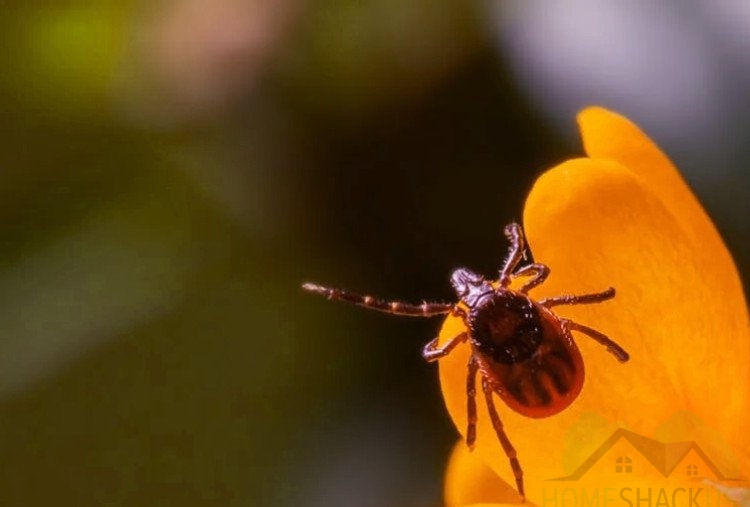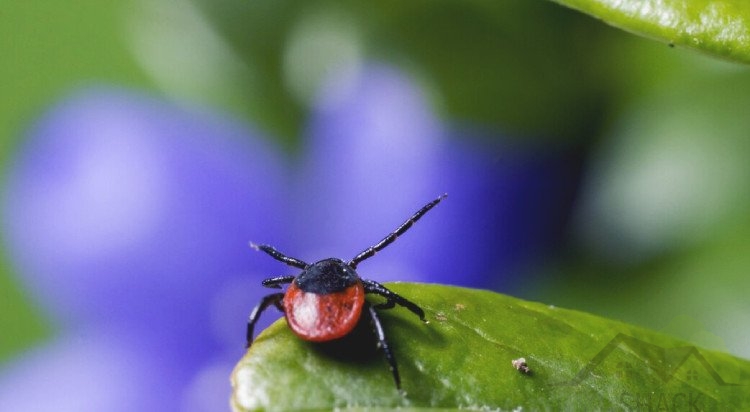Ticks are common pests that can carry diseases like Lyme disease, Rocky Mountain spotted fever, and many others. They thrive in areas with high vegetation and moisture, making gardens a prime location for tick activity.
Knowing how to identify ticks in your garden and take preventative measures can help protect you and your family from these dangerous pests.
What are ticks
Ticks are small, blood-sucking arachnids that are commonly found in wooded and grassy areas. They attach themselves to their host and feed on their blood, which can transmit dangerous diseases.
Ticks have four life stages – egg, larva, nymph, and adult – and can feed on a variety of hosts throughout their lifetime.
Identifying ticks in your garden
Identifying ticks in your garden can be challenging, as they are quite small and can easily blend in with foliage. However, there are a few things you can look for:
Tick habitats
Ticks prefer to live in areas with high vegetation and moisture. Check for ticks in tall grass, brush, and shrubs, as well as around the edges of your garden.
Host animals
Ticks are often brought into gardens by host animals like deer, mice, and birds. Look for signs of these animals in your garden, such as tracks, droppings, or damage to plants.
Tick bites
If you or a family member have been bitten by a tick, it’s likely that there are more ticks in the area. Check the surrounding vegetation for additional ticks.
Visual identification
Ticks are small, flat, and round in shape. They have eight legs and can range in colour from brown to black. Look closely at any suspicious areas in your garden for ticks.
Preventing ticks in your garden
Preventing ticks in your garden is the best way to protect yourself and your family from tick-borne diseases. Here are some steps you can take to prevent ticks in your garden:
Clear vegetation
Clearing away tall grass, brush, and shrubs can reduce tick habitats in your garden. Keep your lawn mowed short and remove any debris or leaf litter.
Create barriers
Creating a barrier between your garden and wooded areas can help to reduce tick activity. Install a fence or use landscaping materials like gravel or wood chips to create a barrier.
Use tick repellent
Using tick repellent on your skin and clothing can help to keep ticks away. Look for products that contain DEET or permethrin, which are effective at repelling ticks.
Wear protective clothing
Wearing long pants, long-sleeved shirts, and closed-toe shoes can help to prevent tick bites. Tuck your pants into your socks and wear light-coloured clothing to make it easier to spot ticks.
Check for ticks regularly
Check yourself, your family, and your pets for ticks regularly. Pay special attention to areas like the scalp, neck, and armpits.
Treat your pets
Ticks can attach themselves to your pets and be brought into your home and garden. Use tick prevention products on your pets and check them regularly for ticks.
What else you may want to know about ticks
Ticks are a common and dangerous pest that can be found in gardens not only in America but around the world. The more you know about them, the more protector you will be.
What diseases can ticks transmit
Ticks can transmit a wide variety of diseases, including Lyme disease, Rocky Mountain spotted fever, and Powassan virus.
How can you reduce tick habitats in your garden
Clearing away tall grass, brush, and shrubs, as well as keeping your lawn mowed short and removing debris or leaf litter, can help reduce tick habitats in your garden.
How often should you check for ticks
It’s recommended to check for ticks daily, especially after spending time in wooded or grassy areas.
Can ticks be found in urban areas
Yes, ticks can be found in urban areas, especially in parks or other areas with lush vegetation.
Can ticks be harmful to pets
Yes, ticks can attach themselves to pets and transmit diseases, so it’s important to use tick prevention products on your pets and check them regularly for ticks.
Let’s summarise the most important steps
It may be difficult to keep your garden completely tick-free, but there are steps you can take to reduce the likelihood of ticks inhabiting your garden.
Here are a few strategies you can consider:
- Keep your lawn trimmed short and remove leaf litter and other yard debris. Ticks prefer moist, shaded areas with long grass and leafy vegetation.
- Create a barrier around your garden using wood chips, gravel, or other landscaping materials. This can help prevent ticks from migrating into your garden from surrounding areas.
- Consider using tick-repellent plants around your garden, such as lavender, rosemary, and marigolds. These plants emit scents that repel ticks and other insects.
- Use tick-control products, such as tick-repellent sprays, on yourself and your pets when spending time in your garden.
- Encourage natural predators, such as birds, to inhabit your garden. These animals can help control tick populations by preying on them.
While it may be difficult to completely eliminate ticks from your garden, taking these steps can help reduce their presence and minimise the risk of tick-borne diseases.





